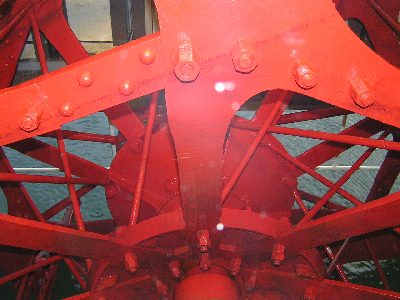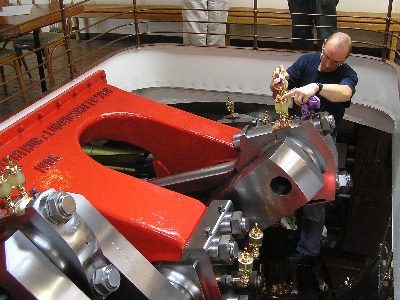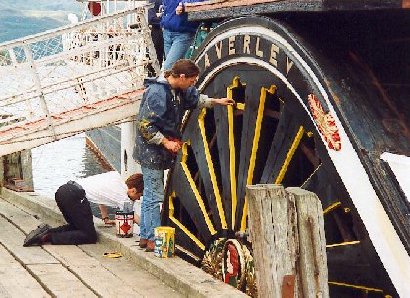|
|
|
|
|
PADDLE WHEELS |
STEAM ENGINES |
DECORATIVE PADDLE BOXES |
|
The form of propulsion unique to paddle steamers |
The engines are a major on-board attraction |
The most distinctive feature when seen from shore |
|
The method of propulsion used by the first steamships and still ideal for calm and shallow waters. Many paddlers have viewing port-holes on the main deck so the turning wheels and splashing waters can be seen to good effect. |
On most paddle steamers the engines are clearly visible and are, for many, a major on-board attraction. Here, lubrication oil is topped-up on Lake Lucerne's PS Schiller whilst the engines are stopped as she calls at a pier. |
From a distance, Paddle Steamers can often be identified by their distinctive paddle boxes, with vents of different sizes and shapes, often highly decorated. The Paddle Steamer Waverley's port side vents gets a touch-up of paint whilst she waits at Tighnabruaich. |



